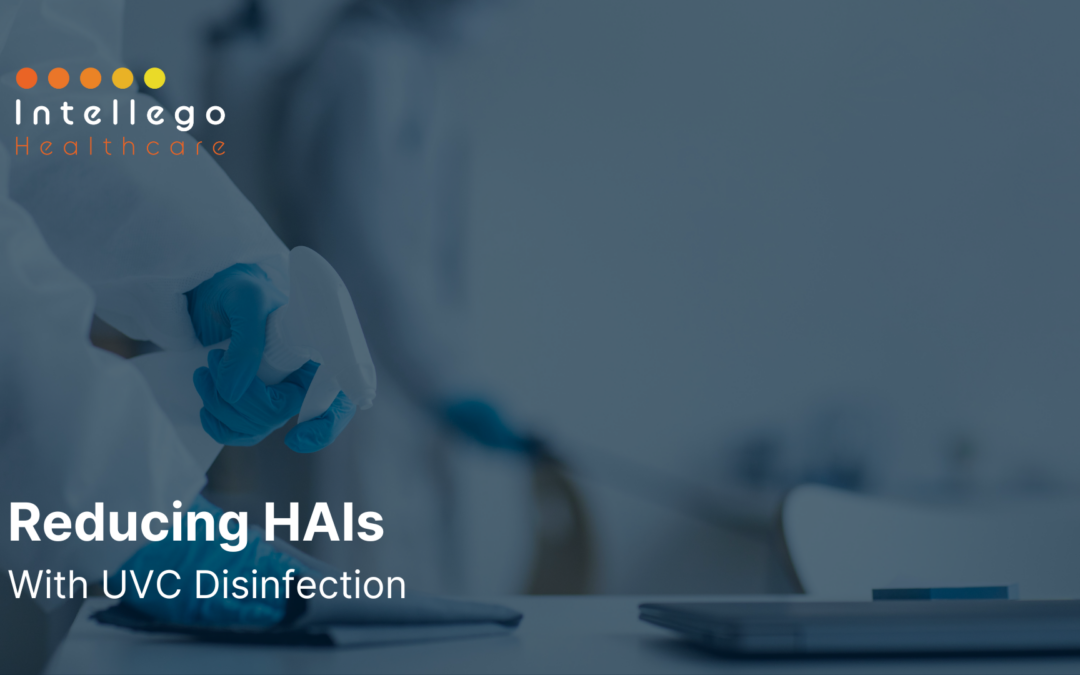Healthcare-Associated Infections (HAIs) continue to pose significant challenges in medical facilities worldwide, affecting patient safety and well-being. The need for effective and reliable disinfection solutions has never been greater. David Chen, our sales director of Asian Pacific explores how UVC disinfection technology is becoming a powerful ally in the fight against HAIs, changing infection prevention practices and creating safer healthcare environments.
The Prevalence of HAIs & The Role Of UVC:
Healthcare-Associated Infections (HAIs), also known as nosocomial infections, are infections acquired during medical care. These infections can originate from a variety of sources, including healthcare staff, contaminated medical equipment, and environmental surfaces. Despite strict cleaning protocols, the persistence of pathogens in healthcare settings remains a concern, leading to increased risks for vulnerable patients. UVC disinfection has emerged as a game-changing approach to combat HAIs effectively. Ultraviolet-C (UVC) light, with its short wavelength, possesses powerful germicidal properties, capable of deactivating a wide range of microorganisms, including bacteria, viruses, and fungi. Unlike chemical disinfectants, UVC light leaves no harmful residue, making it an ideal solution for sensitive medical environments.
Effective Surface Disinfection:
UVC disinfection technology offers a non-contact, rapid, and comprehensive disinfection method for various high-touch surfaces and equipment. From patient rooms, operating theatres, and waiting areas to medical devices and shared tools, UVC devices can target and neutralise pathogens that evade traditional cleaning methods, thus reducing the risk of cross-contamination and HAIs.
Real-Time Validation and Monitoring:
One of the key advantages of UVC disinfection is the ability to validate and monitor its effectiveness in real time. Intellego’s easy-to-use dosimeters precisely measure the UV dose received during disinfection processes, ensuring the appropriate level of exposure for efficient germicidal action. This data-driven approach enhances confidence in the disinfection protocols and helps optimise infection prevention practices.

How Can You Implement UVC Disinfection in Healthcare Settings?
Introducing UVC disinfection technology into healthcare facilities requires careful planning and implementation. It involves assessing the facility’s specific needs, understanding infection risk areas, and customising a comprehensive UVC disinfection strategy.
- Conduct a Comprehensive Assessment:
Healthcare facilities must conduct a thorough assessment to identify high-risk areas where UVC disinfection can make the most significant impact. These areas may include patient rooms, operating theatres, intensive care units, emergency rooms, and other high-touch surfaces.
- Select the Appropriate UVC Devices:
Selecting the right UVC devices tailored to the facility’s needs is crucial. Depending on the application, facilities may choose from fixed, mobile, or handheld UVC devices. Mobile devices can be easily moved around different areas, ensuring thorough disinfection throughout the facility.
- Educate and Train Staff:
Proper training and education are essential to ensure the effective and safe use of UVC devices. Healthcare staff should be well-versed in the correct procedures for deploying UVC devices, understanding safety protocols, and interpreting dosimeter data to ensure appropriate exposure levels.
- Integrate UVC Disinfection into Existing Protocols:
Integrating UVC disinfection into existing cleaning and infection prevention protocols can lead to seamless implementation. By aligning UVC disinfection with routine cleaning practices, facilities can maintain a higher level of infection prevention.
- Monitor and Optimise:
Continuous monitoring and evaluation are crucial for refining UVC disinfection practices. Using real-time data from dosimeters, facilities can identify areas for improvement and adjust their protocols accordingly to enhance disinfection efficacy.

What Does This Mean For The Future?
UVC disinfection technology has emerged as a groundbreaking solution in the fight against HAIs, offering a data-driven, effective, and environmentally friendly method of safeguarding patients and healthcare professionals. By integrating UVC technology into existing infection prevention protocols, healthcare facilities can significantly reduce the risk of HAIs, enhance patient safety, and provide a cleaner and safer environment for all.
As leaders in the UV technology industry, Intellego remains committed to empowering healthcare facilities with innovative and reliable UVC disinfection solutions. Our dosimeters play a crucial role in ensuring the precise and effective application of UVC light, optimising infection prevention practices, and advancing the global effort to combat HAIs. Together, let’s continue to forge a path toward a safer and healthier future with the power of UVC disinfection technology.
About Intellego Technologies AB
Intellego Technologies is a research and development company, headquartered in Solna, Sweden. Founded in 2011, Intellego has grown to become the global leader in colorimetric indicators that are utilized worldwide to visually validate the dose of ultraviolet irradiation delivered to surfaces. Through its patented photochromic technology, Intellego manufactures standard and customized indicators that make the benefits of ultraviolet light visible and promotes the safe, effective and efficient use of UV applications. Intellego’s products support better outcomes with ultraviolet devices in healthcare, food and beverage manufacturing, environmental services, and more. For more information about Intellego, visit Intellego-Technologies.com. For more information on Intellego’s line of colorimetric indicators, visit UVCdosimeters.com.

